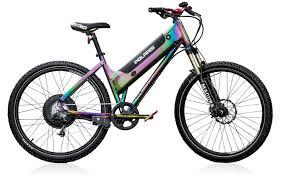November 14, 2014


Energy harvesting technologies seem to be turning up everywhere these days, from portable phone chargers to helmet chin straps to fabric for clothing.
Now the technology is being used in what seems like a no-brainer application -- to provide power for a new line of Polaris eBikes thanks to EVantage USA, which develops and produces the power components for the bikes.
The 2015 line of Polaris eBikes features a new technology called Perpetual Arc Regeneration that allows the rider’s pedaling and other bike use to generate power for the bike’s battery.
Kelly Zarse Tarasuik, director of sales and marketing for Polaris eBikes, explained how the technology, which has been in development for two years and is unique to their 2015 Polaris product line, works. “Most other ebikes do not have this capability due to battery configuration,” she said. “Ours is individually circuit protected and controlled.”
Each gear on the eBike is programmed to provide the appropriate torque and acceleration based on the riding terrain and riding style. Controlling that is the BioSync pedal assistance, the company’s proprietary sensor that reads the cadence speed and power output from the rider. Tarasuik said the instant pedal responsiveness is designed to provide the torque when climbing hills or conserve power for longer distances.
The eBike, which also features technology called Active Trail that automatically delivers uphill acceleration and adjusts back to battery regeneration while pedaling, can generate from 50W to 100W of charging power. How much energy can be generated depends on the rider, terrain, and riding style, Tarasuik said. Riders can generate energy on flat or downhill terrain to capture up to 100W of charging power, or backpedal brake assist by gradually slowing the bike down and capturing energy to be used later. Riders can also use the electronically controlled hydraulic disc brakes to generate energy for the battery, or pedal above 21 mph or 29 mph, depending on the model. Overall, Perpetual Arc Regeneration allows the rider to get longevity and duration from the battery, she said.
Related posts:
About the Author(s)
You May Also Like



